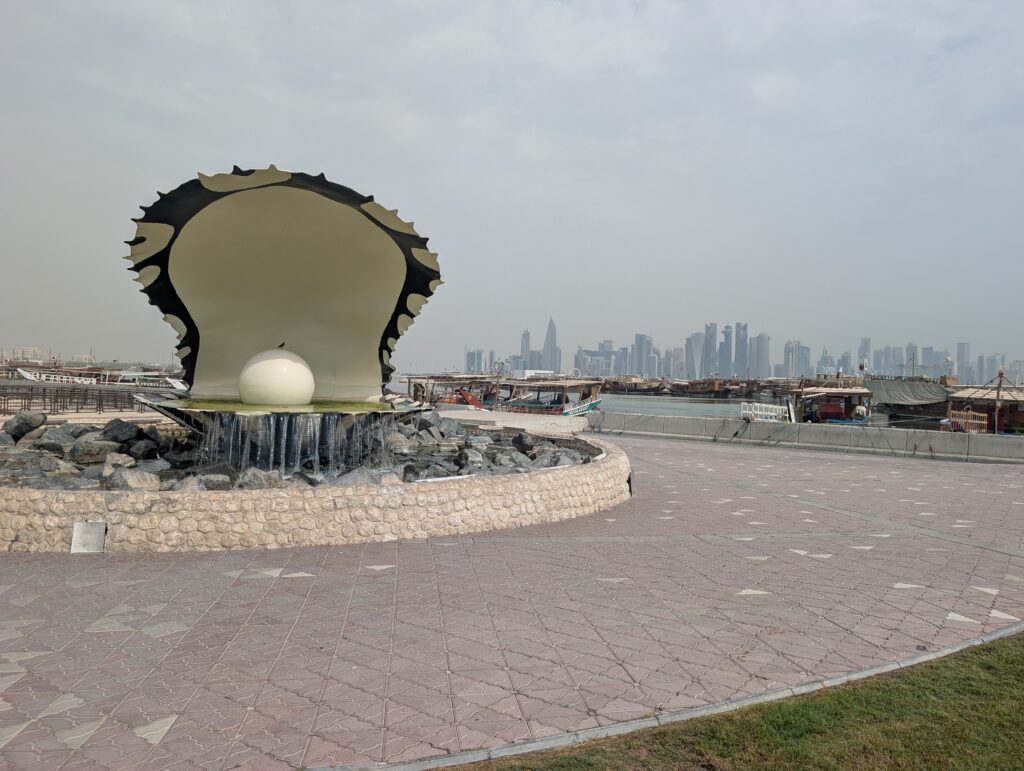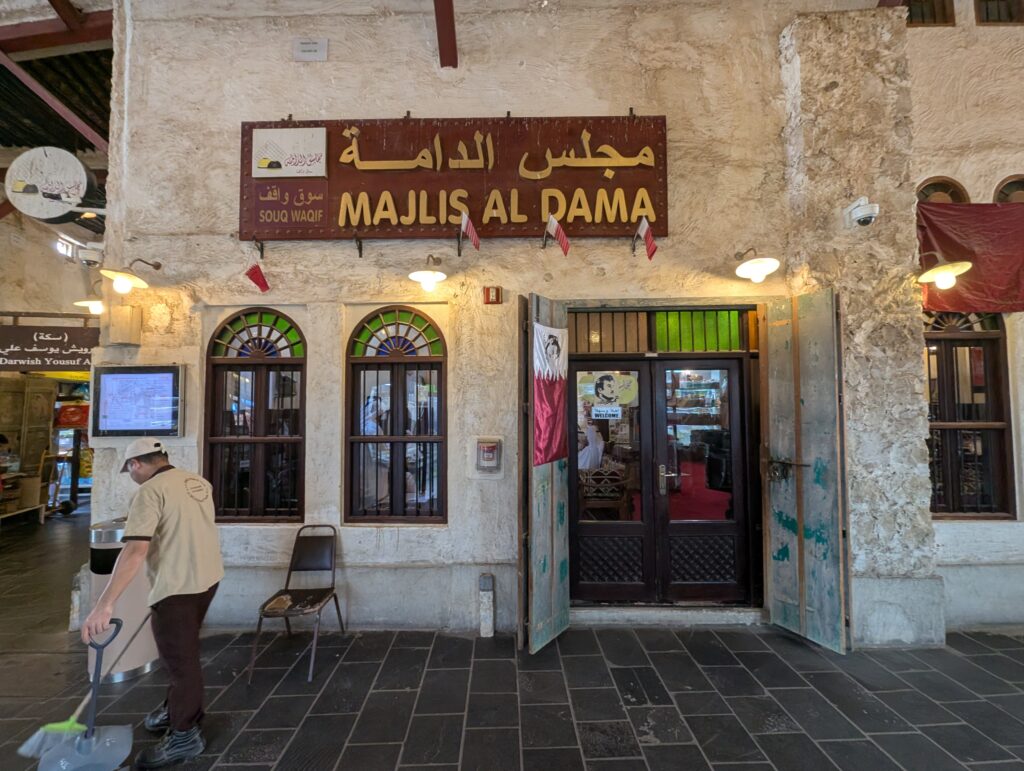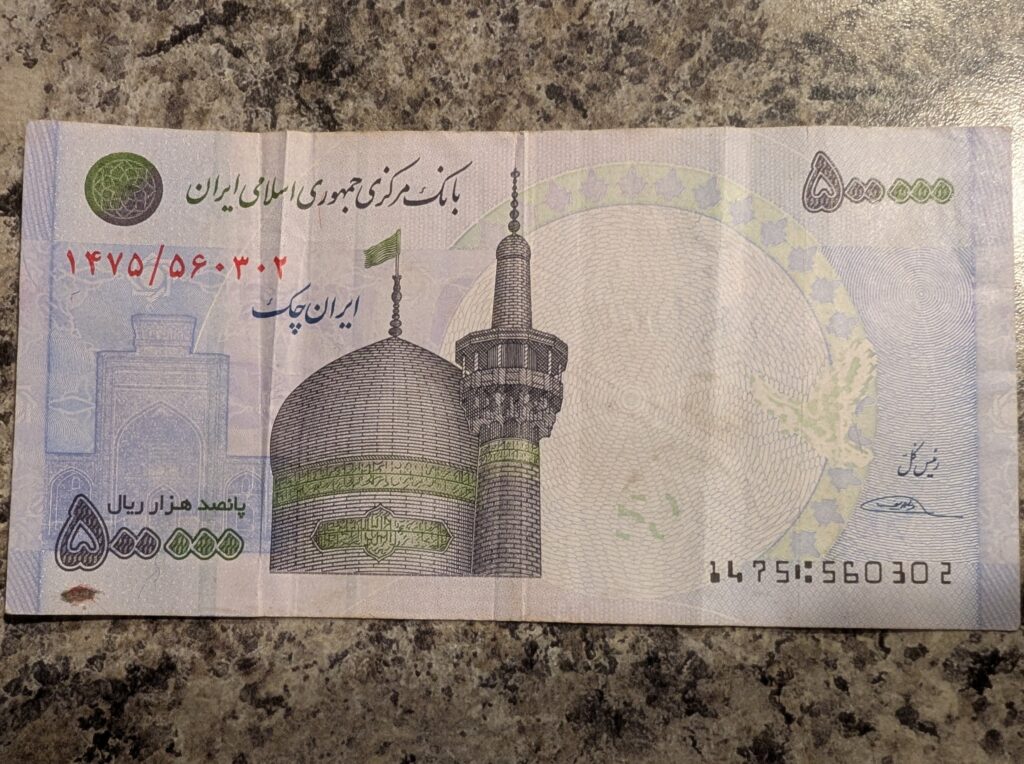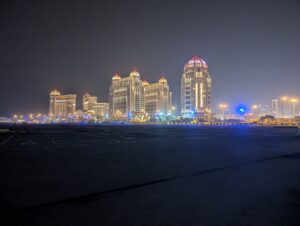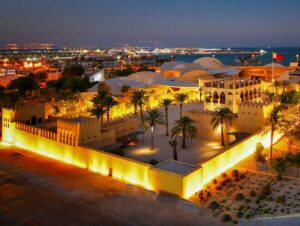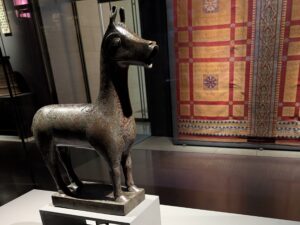Souq Waqif
Sight Seeing & Socializing
Early the next morning, I headed back toward Souq Waqif. As was the case in Bahrain, the souq was pretty dead early in the morning. It was interesting to see mounted law enforcement riding between shops and restaurants, but there wasn’t much commercial activity. I found a peculiar giant “golden thumb” statue marked as a tourist attraction. Not being all that impressed by this, I continued to the camel and horse stables. I didn’t find any horses, but a few dozen friendly camels were lounging in a pen along one side of the souq. The place was deserted at that hour, so I walked the perimeter of the pen, taking pictures and scratching camels, keeping an eye out for any potential spitters. Not far away stands a large, clam and pearl monument to the pearling industry. Nearby are some later model Arabic dhow style boats. I assume one can hire a cruise on these during the cooler season, but that did not seem to be an option when I was there. Apparently, in busier times you can even see the camels race at a nearby track.
After I had taken a few pictures of the monuments and skylines, I wandered back into the souq. If I was going to buy something, I was interested in acquiring a replica of a famous ancient abstract chess set, like the 12th century Iranian set on display in New York’s Metropolitan Museum of Art. Most of the stores that sold souvenir games just had “hand made” made in China Staunton sets, and other relatively generic sets made to look higher class and marketed to tourists. I checked with every toy vendor in the souq.
The souq is arranged so that nearly all of the shops of the same type are near one another. There is a grocery section, a clothing section, a pet section, a foot court area, and a tourist kitsch zone. I was able to work through most of the souvenir shops selling games pretty quickly because of this. Most of the vendors spoke English. One of the last ones I checked did not. I showed him a picture of what I was looking for. All he recognized from my picture was a game with a 64 square board. He gave me directions to a place quite a ways off. I suspected I might be on a goose chase as this was nowhere near the game area of the souq, but it turned out to be a fun detour.
The non-English speaking souvenir vendor had directed me to Majlis Al Dama. As you might expect from reading the other articles in this section, this was a sitting room dedicated to the traditional Qatari game of Dama. Dama is a bit like checkers, but there are different rules as to how the pieces move, and when captures can or must be made. I stood outside looking through the window and deduced the purpose of this sitting room. The Qatari government, wanting to preserve the tradition of playing Dama, had dedicated this space as an always free, open to all social space dedicated to the game. Wise of them, I thought, to put this majlis in the middle of the best visited tourist market in town.
Before long, I was invited in by an English speaking former Qatari Air Force maintenance supervisor named Khalid. He was the only actual Qatari I met the entire time I was in Qatar. Khalid was a congenial older fellow. We chatted as he taught me the basics of Dama. I was able to deduce some of the basic strategy, and strung the game out for a while before succumbing. I was being introduced to the rules and piece movements as the game went along. Eventually, a fissure developed in the dam I had created with my pieces. My new friend Khalid broke through, and shortly thereafter the dam burst. I was soundly defeated. It was a fun interaction. This was the kind of personal experience I enjoyed more than looking at pearl monuments or peculiar mall architecture.
(Continued)
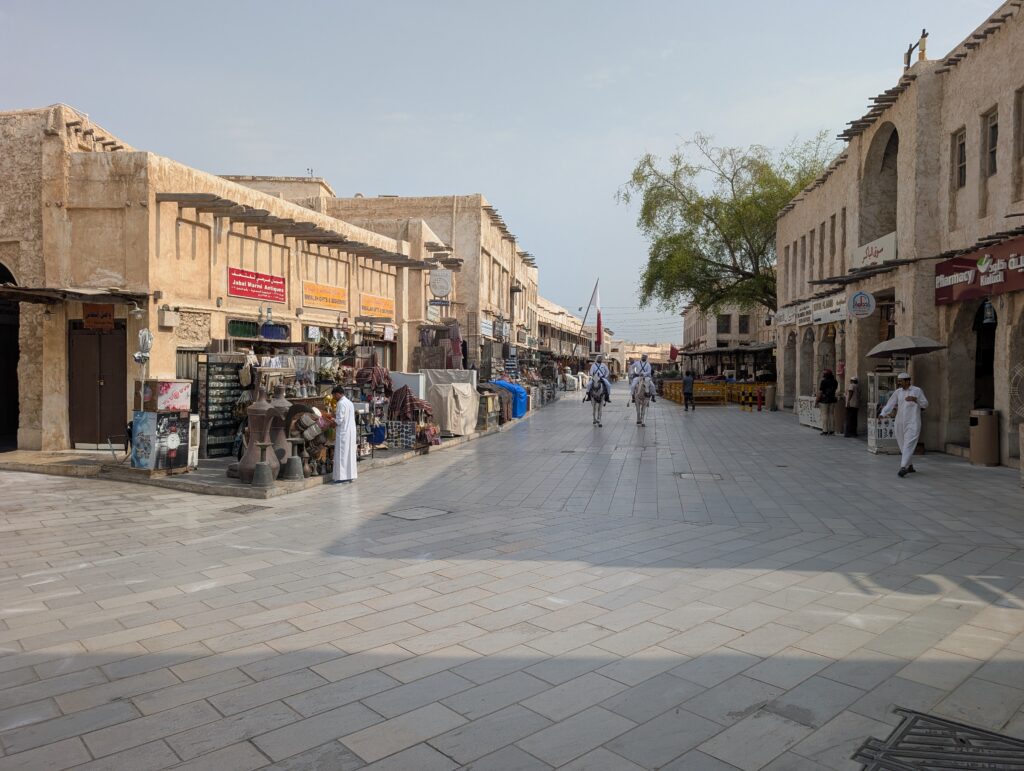





After taking my Dama beating, I bade Khalid farewell and set out to walk the rest of the market before heading off to other pursuits. I found an entire section of Souq Waqif dedicated to falconry. Qatar claims falconry as the national sport. They are proud of this heritage. There are at least a couple dozen falconry shops in Souq Waqif. They sell gloves, hoods, jesses, anklets, lures, and everything else you might need to work with your bird. More impressively, most of these shops had ample supplies of the falcons themselves. I cautiously walked into several, curious about this type of business I would never see at home in America. Most of them had benches for customers to sit and visit, and I assume to be pitched on the sale of an expensive bird. The birds were beautiful and seemed comfortable there. I asked one owner how much these birds cost. I was told they could cost anywhere between 5,000 Qatari Riyals (about $1,300) to several million, depending on breed and training. As with most hobbies, one can spend as much as one feels inclined to spend.
I did not buy a falcon or any falconry equipment, but I did make a purchase in the souq that morning. On the way out, I passed through a section featuring stores that sold fruits, nuts, and other grocery type items. I entered a shop with several middle eastern men talking things over amongst themselves in Arabic. The shop owner and an employee were among them, but there seemed to be a few other local expats from different parts of the Islamic world chewing the fat, like farmers in a coffee shop in Firebaugh or Dos Palos. The shop had a remarkable variety of different types and varieties of nuts, dates, and dried fruits. I was feeling a bit peckish, but not ready for lunch. I noticed that the shop labeled the country of origin for each of their products. There were lots of different kinds of pistachios. Several of the pistachio varieties were from Iran.
I had always known that Iran was a world leader in the production of pistachios. Before 1979, most pistachios in America were imported from Iran. Folks older than me may remember that eating pistachios used to stain your fingers red. Red dye was used to mask cosmetic flaws in the imported Iranian nuts. After the fall of the Shah and the subsequent Iran hostage crisis, the US imposed a strict embargo, cutting off pistachio imports – and everything else – coming from Iran. This economic factor encouraged domestic production and spurred the California pistachio industry prevalent in the San Joaquin Valley today. There have been pistachios produced in California since the late 19th century, but until 1979, the vast majority of those nuts consumed in the US were imported from Iran.
I always assumed from this – no doubt with encouragement from my American pistachio growing family members and neighbors – that Iranian pistachios were all junk. I had not really considered that none of these folks had seen an Iranian pistachio since I was in early elementary school. I decided I was going to see if these Iranian pistachios were any good. I bought about half a kilogram. They had no red dye, and seemed just about on par with what you might buy in America, minus the packaging that preserved a bit of freshness.
(Continued)

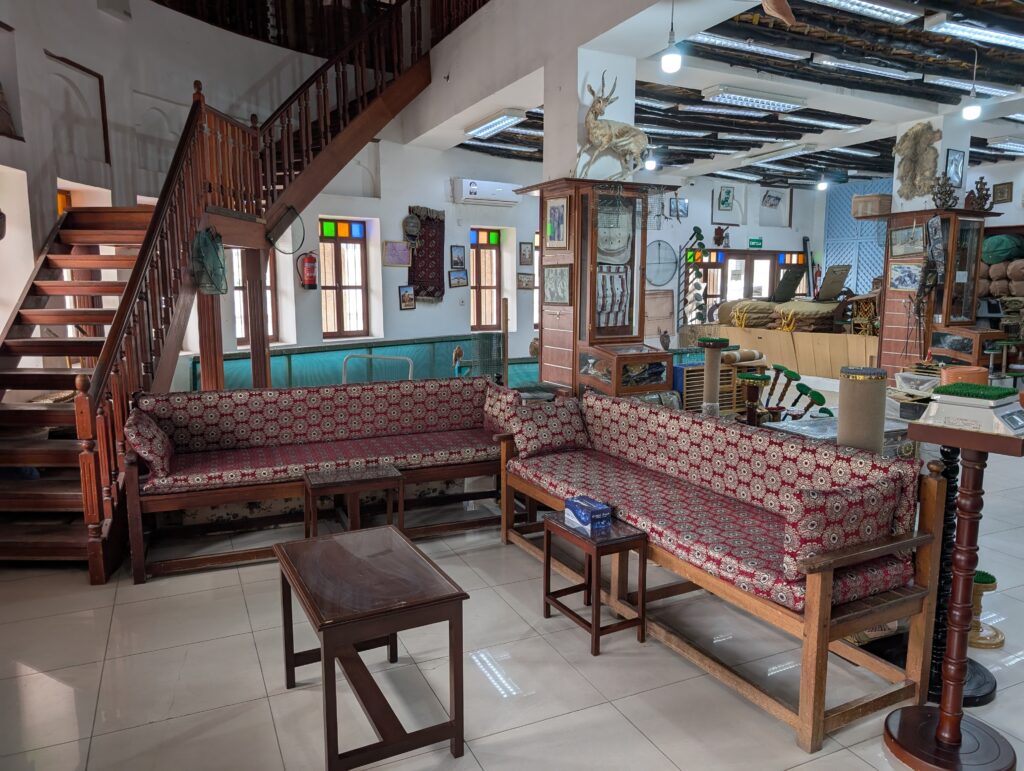
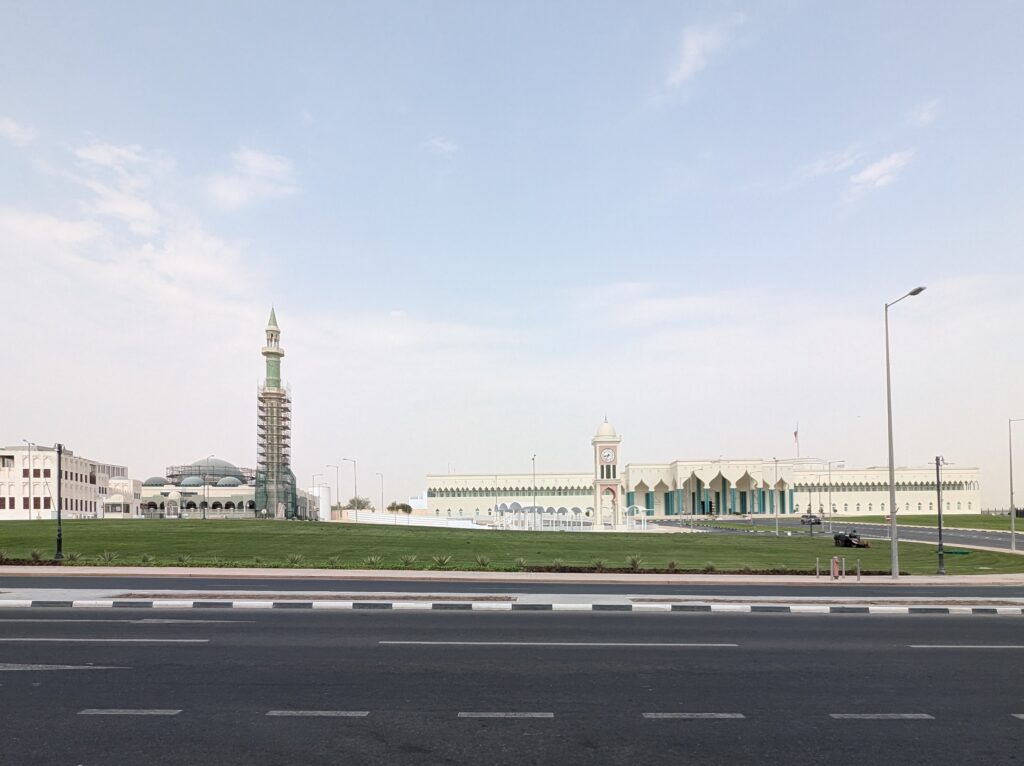
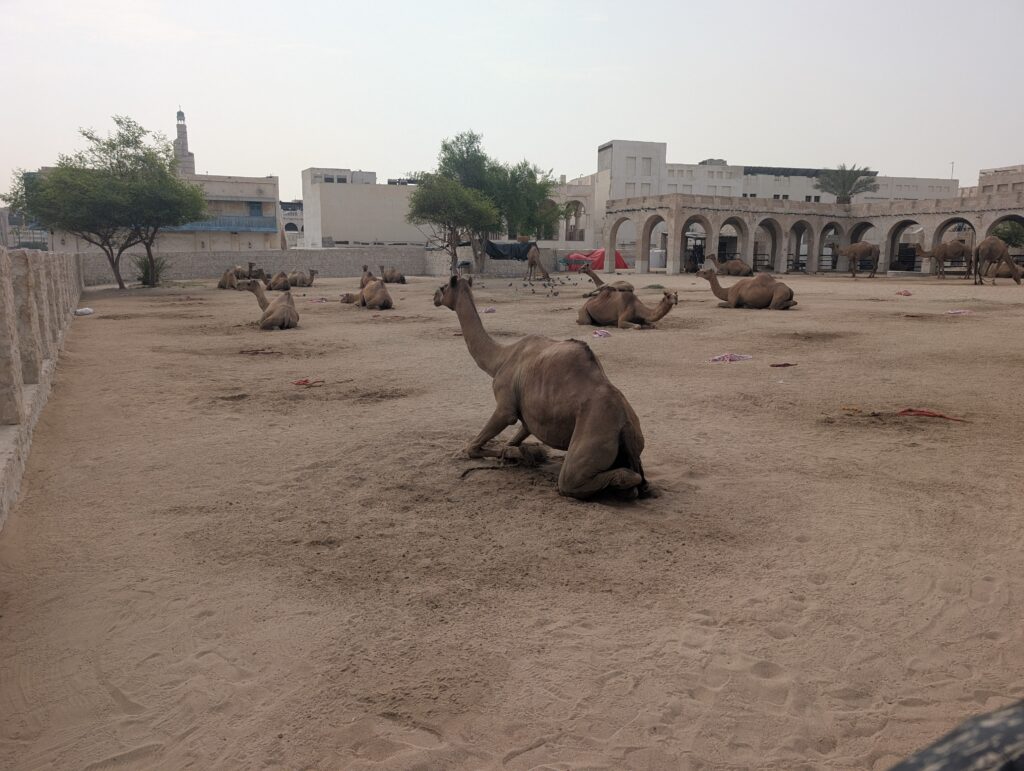
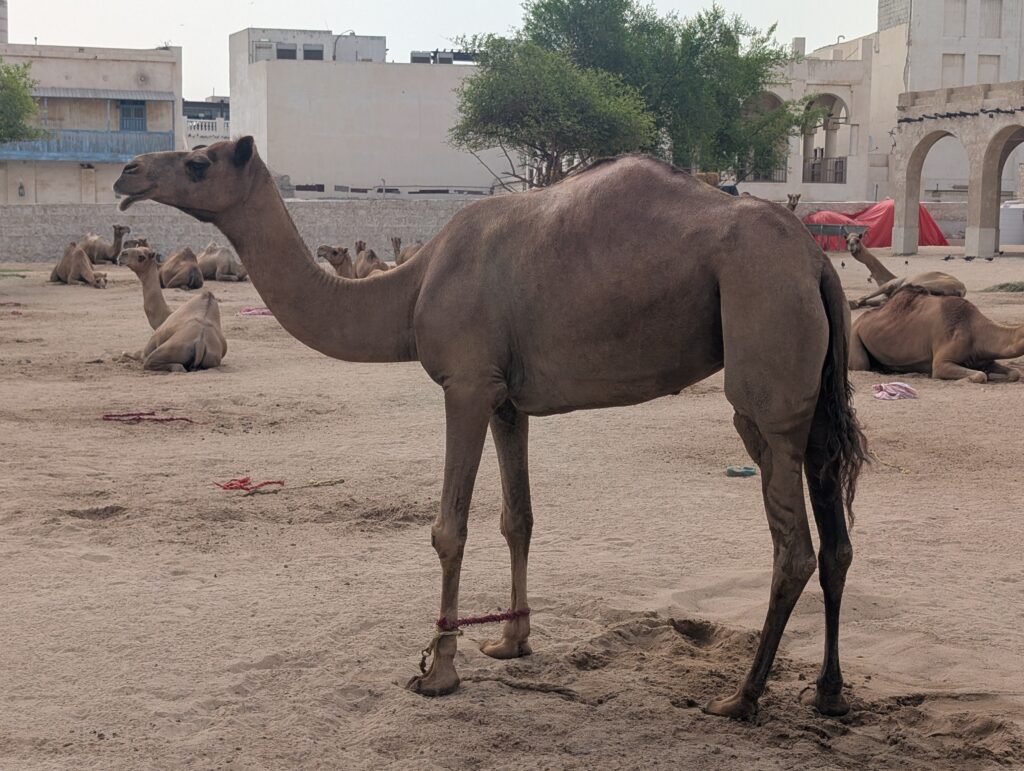


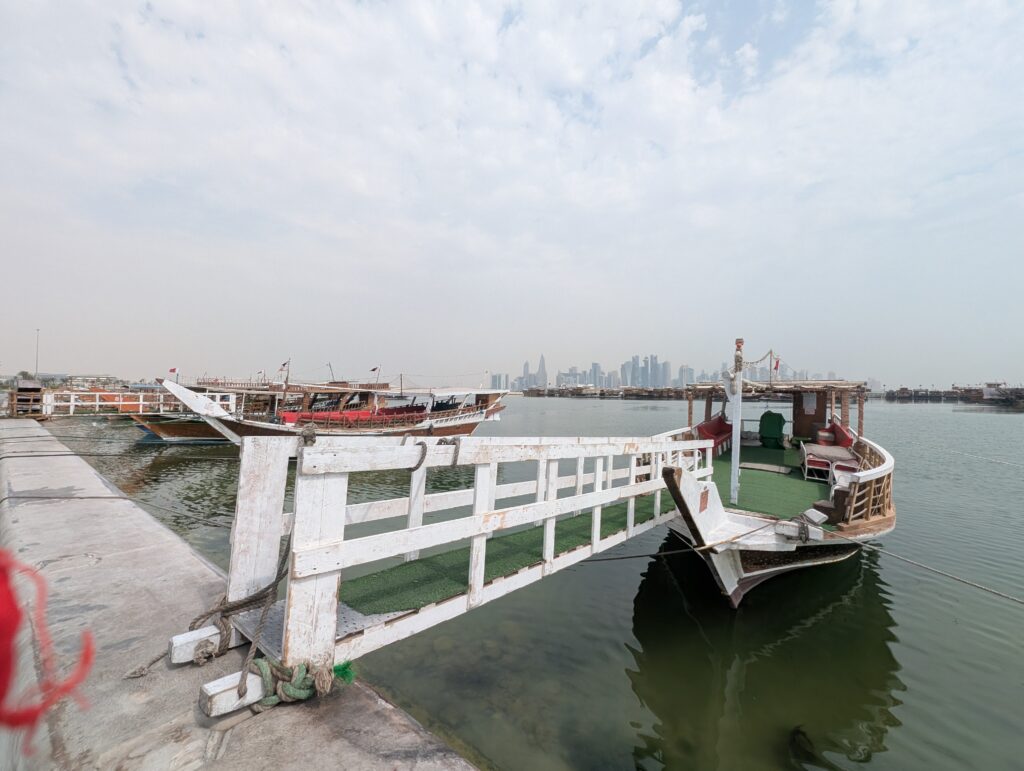
In the course of the transaction, some of the men tried to make conversation with me. None of them spoke fluent English. One Pakistani man spoke some limited, broken English. After I broke out my Google Translate app, I could talk to everyone. It turned out one of the men there was from Iran. They asked where I was from. I told them I was American. The Iranian was very outspoken in his favorable opinion of America, and stated that he would really like to move there – that it was a lot better country than Iran.
“Governments may dislike one another,” I replied, “But people do not need to share that ill will.”
He responded with a friendly gesture, and hearty agreement. He opened his wallet and pulled out a 500,000 Iranian Rial note. I thought he was just showing it to me, but he meant it as a gift. I offered to trade him some Qatari or American currency for it.
“It is almost worthless, just like the Iranian government,” he jokingly retorted. “It is not worth 10 Qatari Riyals (about $2.50).”
Ultimately, he insisted I take the note as a gift. I love collecting currency, and I thanked him profusely, as I thanked all them for the nuts I had purchased. I never want to insult anyone by too ardently turning down gifts. People who see themselves as hosts find honor in gift giving, and it can be a blessing to the giver and the receiver. In any case, what could it hurt if the note was only worth $2? It turned out to be worth a bit more than that. I discovered after returning to my room that 500,000 Iranian Rials are worth more like $11.80 US. I felt a little bad that the Iranian in the shop had given me $11. That’s probably a lot more to him than it is to me. Nevertheless, his point was made. Iranian currency is indeed pretty close to worthless, and their government does have a lot of problems. More importantly, despite the angst between our governments, this Iranian and I could be friends and exchange gifts and pleasantries. Traveling has taught me that this is nearly always the case.
After walking the souq and seeing these few other sights around the Doha corniche, I had seen the things I set out to see this last day of my trip. I had worked up an appetite. As the long shadows of the late afternoon began to fade, I made my way to one of the local cafeterias. I had some machboos. The meat in the machboos was not quite of the same quality as that in the restaurants near the souq, but the flavor was just as good, if not better. The price was a tiny fraction of what I had paid the previous days.
Once back at my motel, I did not venture back out at night. I bade farewell to my young friends working the desk. I was unlikely to see them the next morning. I needed to leave for the airport on the 5 a.m. shuttle. I ate my snacks and organized what things I might need during the flight the next morning. It would be a marathon, non-stop flight from Doha to San Francisco. I packed my clothes. I set my alarm. It had been an amazing trip, but I was anxious to reunite with Stephanie. There was work yet to do on the farm in California. I slept my last night in the Hyatt, then caught the early shuttle to the airport for my return trip.
